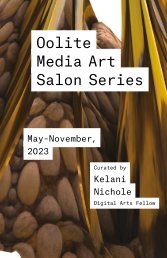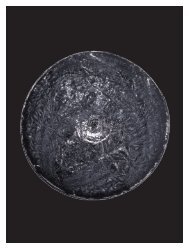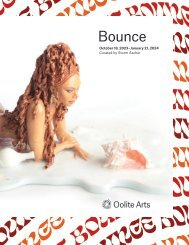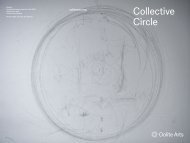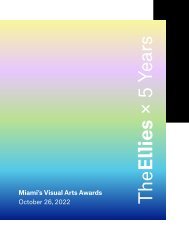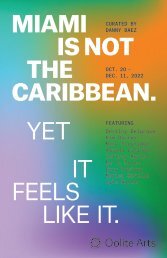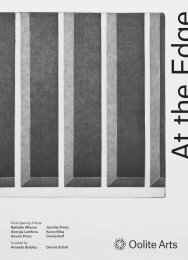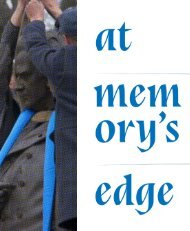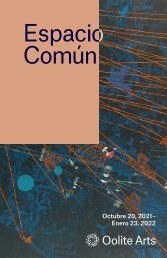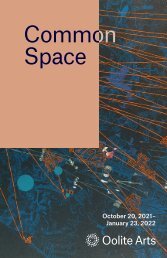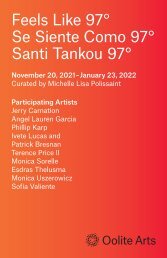Good Times: Friday
In Good Times, multi-disciplinary artist Chris Friday continues her exploration of the depiction of Black bodies and their presence/absence in contemporary space. Sourcing personal narratives, expressions of popular culture, and communal ritual, Friday utilizes drawing, video, illustration, sound, and ceramic sculpture to create installations that prompt the viewer to consider more expansive notions of blackness and where communities – known and unknown – are given a space to dialogue, reflect, and celebrate. Friday’s subjects – family, friends, colleagues – and the settings in which they exist, become mechanisms to unsettle traditional hierarchies and arrangements of power. In particular, she presents large-scale drawings of figures in acts of leisure – playing, dancing, resting – that refuse full exposure in a slight but noticeable turning away from the viewer. By placing them in the public realm (i.e. the gallery space), but limiting access to their interiority, Friday’s works inhabit a liminal space that is at once visible and hidden, silent and defiant.
In Good Times, multi-disciplinary artist Chris Friday continues her exploration of the depiction of Black bodies and their presence/absence in contemporary space. Sourcing personal narratives, expressions of popular culture, and communal ritual, Friday utilizes drawing, video, illustration, sound, and ceramic sculpture to create installations that prompt the viewer to consider more expansive notions of blackness and where communities – known and unknown – are given a space to dialogue, reflect, and celebrate.
Friday’s subjects – family, friends, colleagues – and the settings in which they exist, become mechanisms to unsettle traditional hierarchies and arrangements of power. In particular, she presents large-scale drawings of figures in acts of leisure – playing, dancing, resting – that refuse full exposure in a slight but noticeable turning away from the viewer. By placing them in the public realm (i.e. the gallery space), but limiting access to their interiority, Friday’s works inhabit a liminal space that is at once visible and hidden, silent and defiant.
- No tags were found...
You also want an ePaper? Increase the reach of your titles
YUMPU automatically turns print PDFs into web optimized ePapers that Google loves.
IV<br />
The deliberate gesture of turning away is a consistent<br />
element in <strong>Friday</strong>’s recent drawings. This “quotidian<br />
practice of refusal”4 involves limiting knowledge to<br />
something or someone, and is therefore an overt and<br />
defiant expression of the unwillingness to comply with<br />
the expected or the required.<br />
In 20 Feet Tall, the first of these drawings from<br />
2021, we see a woman who is presumably sleeping, her<br />
head resting lightly on a folded pillow, her right foot<br />
over her left knee, slack and relaxed. While the figure’s<br />
attempt at inconspicuousness is undermined by her<br />
scale, <strong>Friday</strong> disrupts the traditional dynamics of<br />
spectatorship by withholding visual information from<br />
the viewer and granting the woman anonymity.<br />
The figure gives us her back, and in so doing<br />
denies us the possibility of identifying or knowing her.<br />
20 Feet Tall is a direct challenge to the way we usually<br />
interact with images—as consumers who are granted<br />
full and unrestricted access to the things before us.<br />
Despite the title, which in its use of the word tall suggests<br />
that the figure will loom over us vertically, she<br />
extends herself horizontally along a wall, requiring that<br />
as viewers we situate ourselves in reference and<br />
deference to her, not the other way around.<br />
20 Feet Tall, like much of <strong>Friday</strong>’s work, exists in<br />
the public realm (in this case, the gallery space). Yet the<br />
work also occupies a space apart from and beyond the<br />
viewer. <strong>Friday</strong> positions her figures in such a way that<br />
their privacy is considered above all else. They inhabit a<br />
liminal space that renders them at once visible and<br />
hidden, public and private. They exist, in view of others<br />
but live in the comfort of their interiority. The freedom<br />
to decide how much to give or show of oneself is about<br />
reclaiming space, about determining how and why one<br />
may choose to assert or relinquish control, and to whom.<br />
IN/VISIBLE MEN/D<br />
2021<br />
Chalk on black archival paper<br />
8 4. Campt interview.<br />
9




